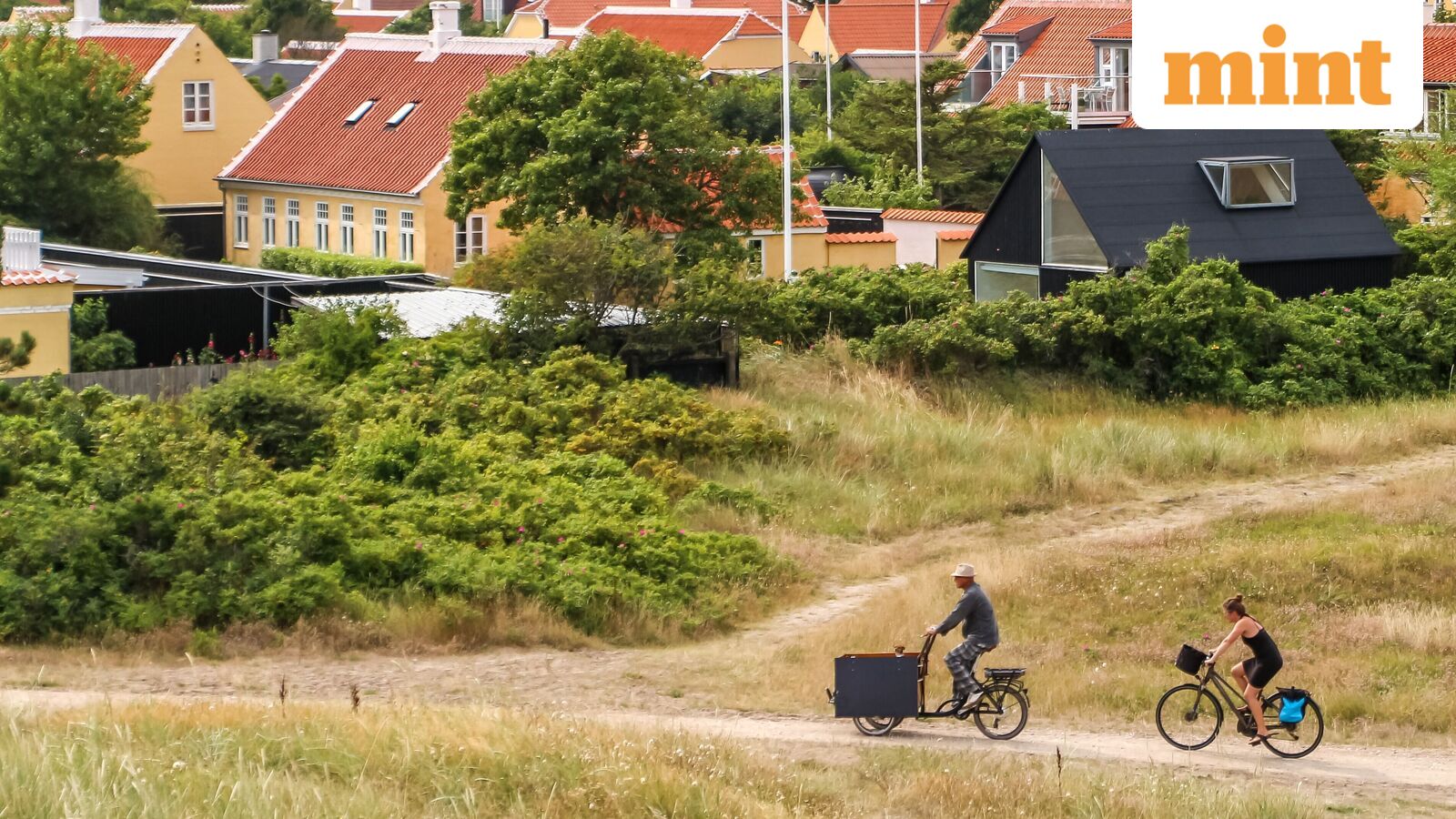At the northern end of Denmark’s Jutland, a finger-like projection sticks out into the sea. Standing at the tip of the sand bar of Grenen, there is nothing but roiling seawater on all sides and screeching seagulls. The air is thick with the smell of salt and seaweed. A bright summer sun hovers close to the horizon in the late afternoon but does nothing to temper the chill. The wind howls and lashes, whipping up sand and throwing it against everything in its path. Grains land on any exposed skin like little missiles, abrasive and burning; un-spectacled eyes can be blinded. The breeze is so powerful that it makes everything kinetic, even people. This is where the North Sea and the Baltic Sea meet in spectacular fashion.
The clashing of the seas is clearly discernible: the lighter, gentler waters of the Baltic are a contrast to the darker, ferocious North Sea, and the line where the two collide stretches to the horizon. The swirling winds and the crashing waters are a clear reminder of the raw and primal force of nature. It is both exhilarating and scary.
On the beach, the brisk winds whip up sand particles and account for the shifting dunes, giving the beach a Mad Max kind of vibe. Between the dunes are reminders of the region’s history: Grey, squat concrete bunkers dot the sands, vestiges of World War II, remnants of the fortifications built during the German occupation as part of the Atlantic Wall. Their once intimidating facades have been softened with colourful graffiti. One of them has been converted into Skagen Bunker Museum, highlighting the area’s wartime history.
Located about 450 km to the north of Copenhagen, Grenen carries the tag, ‘Top of Denmark’. It is an outpost of Skagen, a little town that sits a few minutes south. Skagen’s winding streets are filled with pretty houses and cottages, painted bright buttery yellow. The colour is so distinctive that it has its own name: Skagen yellow. The houses are topped with red gabled roofs and white trimmed windows and have pretty gardens bursting with an abundance of colourful flowers and lush grass.
Strolling through town is peaceful and relaxing; I wander aimlessly for more than an hour, peering over white picket fences, gawking at window decorations, watching occasional animated conversations between neighbours, and admiring embellished facades and doors. There is no crowd, no bustle, no traffic. It is a town filled with history of the local variety: Established as a port town, it was populated mostly by fisherfolk, whose homes are still visible in the older parts. The rugged, weather-beaten facades of the houses are a testament to their ancestry, and have been preserved as Skagen’s cultural heritage.
More striking is the beautiful light, warm and cheery, that suffuses everything. It is this quality of light, especially during the long twilight, that drew artists from across the region during the 19th and 20th centuries. Painters, writers and photographers arrived in droves to live and work here, to capture the rugged seascape, the lives of fisherfolk and townspeople, and the landscape. It is painters who had the most impact and birthed a special genre in Danish art history. They called themselves the Skagen Painters.
I encounter both the town’s general history and representative works of the Skagen Painters at the Skagens Museum, including its fishing history, stories of shipwrecks and daring rescues, of families that relied on the sea, and the town’s deep connection to the elements. The paintings of children playing by the sea, fishermen at work, ladies clad in elegant gossamer gowns strolling around town, and scenes of the sea bathed in ethereal light are transfixing.
More works are on display at the Anchers Hus, the residence of artist couple Anna and Michael Ancher. It dates back to 1884 and was converted into a museum in 1967. Showcased here are various daily household items used by Anchers, such as furniture and crockery, as well as paintings done by the couple and their friends. The works are done so beautiful and evocative that scenes from them come to life when I stand at Grenen, buffeted by the elements.
At twilight, Skagen’s sky is a beautiful blue tinged with peach that slowly turns into a surreal pink and orange. This tableau lasts a few hours before darkening. As the clock inches towards midnight, the sky is still not dark, just a deep shade of bluish-grey. Over two days, it feels like Skagen and its surroundings have exhibited the entire colour palette and induced much joy. Who knew that the top of Denmark could make visitors feel on top of the world.
Anita Rao Kashi is an independent journalist based in Bengaluru.

